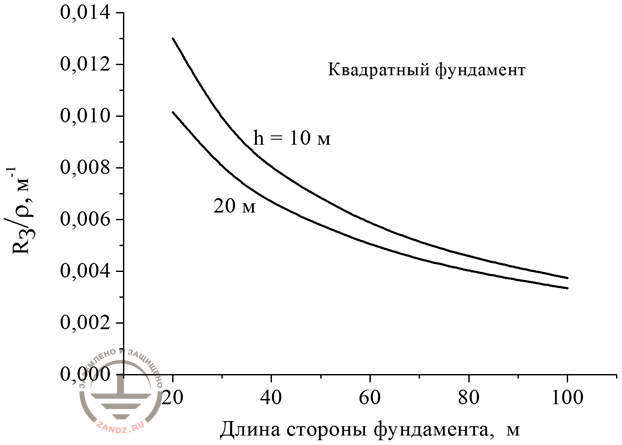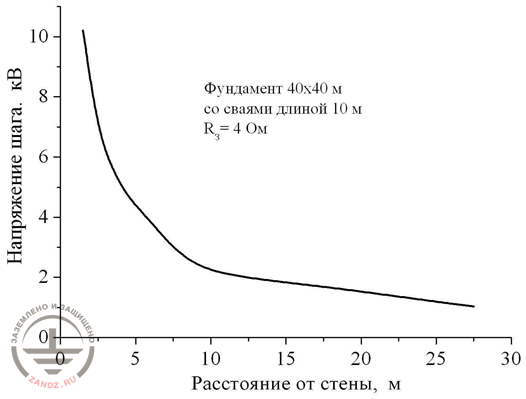From the series of articles "Lightning protection of high-rise buildings".
In no regulating document on lightning protection the requirements to ground electrodes of lightning rods depend on the height of the building. Most likely, they won't be determinative. There will probably bee an own electric sustain in a high-rise building. Its grounding requirements will be more stringent, and the contour of the technological grounding won't be separated from the grounding electrode system of lightning protection.
The powerful foundation of high-rise buildings will be likely to form the basis of the grounding device. It is not so important what will be the foundation design. It can be in the form of a reinforced concrete slabs, pile or strip. Anyway, the whole building footing will participate in the spreading of the lightning current and it is unlikely that the grounding electrodes will go beyond this foundation borders. With this in mind, it's easy to estimate the marginal technical capabilities of the territory allocated for the grounding device. It is enough to assume that the soil are under the foundation will be completely filled with metal electrodes to a predetermined depth h. Computer calculation results are presented in Fig. 12 for h=10 and 20 m (It is difficult to assume greater depth of the foundation and besides the same result for the building of a larger area doesn't depend on this parameter so much).

Figure 12. The dependence of the lowest possible grounding resistanceon the length of the building foundation with a square base
Квадратный фундамент- square foundation
Длина стороны фундамента, м – length of the foundation side, m
6. Touch and step voltage
The question about the impact of these voltages has to be raised due to frequent lightning strikes of high-rise buildings. Lightning type has no specific importance. Although the ultimate currents of upward lightning are several times less than the downward, they are still able to raise the potential at the ground surface to a level dangerous to humans and animals. Calculated data in fig. 13 show a change in step voltage with the removal from the foundation of the house measuring 40x40 meters with piles 10 m deep, due to which the grounding resistance was brought to 4 Ohms. The calculations are carried out for the current of 30 kA (average lightning intensity).

Figure 13. Step voltage at the basement of the building with the ground resistance of 4 ohms at a lightning current of 30 kA
Напряжение шага, кВ - step voltage, kV
Фундамент 40*40 м со сваями длиной 10 м - foundation of 40x40 m with 10-meter-piles
Расстояние от стены, м - distance from the wall, m
Even at the distance of 5 m from the foundation, the impinging voltage is kept at the level of 5 kV, which can hardly be regarded as safe for humans, if the ground surface has no insulation (eg, asphalt) coating.
Generalized calculated curves of step voltage distribution curves at the foundation of buildings 20x20 and 80x80 m are built in Fig. 14. They allow us to estimate the expected values for any soil and any lightning current. For example, at a lightning strike with the current of 100 kA in case of building placement in a site with the resistivity of 1000 ohm m even at the distance of 10 m from the foundation, the step voltage will be not less than 10 kV.
E. M. Bazelyan, DEA, professor
Energy Institute named after G.M. Krzyzanowski, Moscow
Read more "7. External high voltagel"
Useful materials:
- Series of articles about lightning protection for beginners
- Series of webinars about grounding and lightning protection with Professor E. M. Bazelyan
- Elements of external lightning protection
- Consultations on the selection, design and installation of grounding and lightning protection systems
Related Articles:
 Holder for a lightning- rod - mast GL-21101G / GL-21102G / GL-21103G to the chimney (stainless steel)
Holder for a lightning- rod - mast GL-21101G / GL-21102G / GL-21103G to the chimney (stainless steel)



